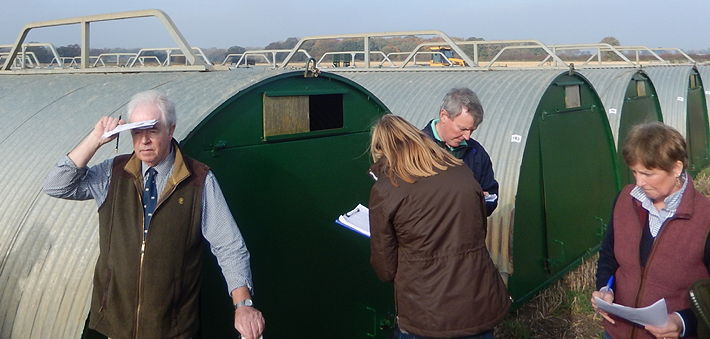As the year draws to a close, prices are in the main still continuing their downward trajectory with the latest SPP falling by 1.03p to stand at 141.81p, which is currently 7.5p below last year’s level and more than 9p lower than the five year average.
For the time being, EU prices seem to have stabilised to some extent, but rock bottom reference prices are still in the 108p/kg region.
UK weekly contribution prices have in the main stood on between 130p at the bottom and 138p at the top, but large numbers are still being rolled.
Supply continues to exceed demand for spot pigs with still very little space available, even at bargain basement prices and although regular spot sellers should be able to receive in the 120p region, surplus overweights are hard to clear at any figure not helped by the “short” weeks ahead.
The value of the Euro has unfortunately also dropped from 85.4p a week ago to 85.08p today, which puts yet more pressure on the import/export balance and little encouragement for UK cull sow buyers to improve their very low bids which remain in the 23p – 26p/kg region.
The weaner market is a case of don’t ring us we will ring you and continues to fall with little confidence in finished pig prices and feed costs in the immediate future.
In the absence of any published AHDB prices, it is estimated that most RSPCA assured 7kg piglets are trading in the £33 – £36.50/head range whereas spot weaners remain unloved at almost any price.
Feed ingredient values are in some cases a tad easier with UK feed wheat traded for January delivery at £222/t compared with £225/t a week ago and longer months saw September 2022 traded at £197/t compared with £203/t previously.
The UK spot feed wheat weekly average slipped slightly to £219.10/t compared with £221.30/t a week ago.
Feed barley is also cheaper by £3/t on the week at £214/t for January 2022 and September 2022 deals have been agreed at and around £183/t.
Unfortunately, protein prices are the party poopers with Hipro soya rising from £393/t to £410/t for January 2022 delivery.
Longer months saw May – October 2022 deals done at £370/t, up £11/t over the past seven days.
Rapemeal prices have finally levelled to some extent with January 2022 at £307/t, but a much easier trend as far as August – October 2022 is concerned at £232/t.
And finally, rather than publishing a very depressing summary of the past year, a look forward to see if there are any chinks of light in the universal gloom surrounding the pig industry might be more appropriate.
Clear evidence is emerging to indicate that EU pig numbers are on the slide and if this is maintained, it could to some extent help to fill the yawning gap between UK and EU Prices, which continue to undercut our market.
There are also some suggestions that global wheat prices may also ease and that some of the bulls could be replaced by bears.
But the possibility of Russian wheat export quotas is still a worry as well as the effect on the market if Putin’s sabre- rattling sparks off more turmoil in the Ukraine.
Closer to home, pig numbers are unsurprisingly dropping following the culling of many herds and weaner pigs, with slaughter throughputs 6% below this point last year.
According to industry sources, the UK is now relying on 60% of its pork needs from abroad but this needs to be reduced if the industry is to survive for much longer.
With African Swine Fever outbreaks also occurring in some European countries, above all else more attention needs to be given by the so called Government to limit imports from foreign sources, which is what the EU would do to us if the boot was on the other foot!
There is therefore no doubt that pigs will be short one day, but there is also a shortage of time as many producers may be unable to hang on before this happens.
And finally finally, with an explosion of Omicron outbreaks hitting the catering sector in particular, the future of pig producers supplying caterers will also be under pressure in the challenging year ahead.




